Rollin’ Down the River, European Style
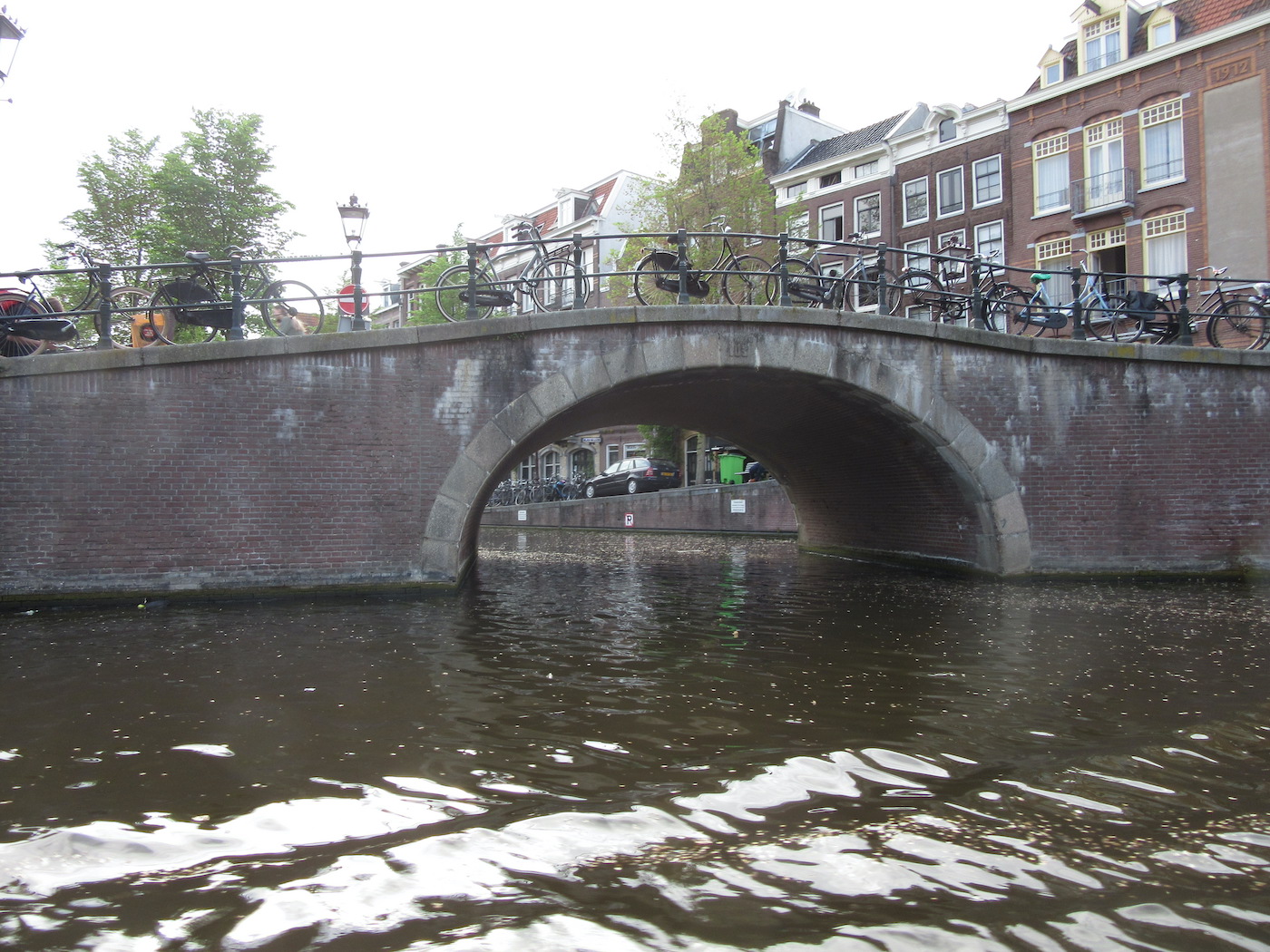
The trip was called “Cruise the Face of Europe” and, in fact, it was a 15-day river trip from Amsterdam to Budapest that did just that. Not surprisingly, early outposts, ports, and villages at strategic locations along the Rhine, Main, and Danube rivers provided early opportunities of commerce and control for centuries, from Roman times into 21st century.
So, carving our way through Europe upon ageless transport water routes brings present-day travelers in contact with centers of medieval history long past.
The journey started in the Netherlands at Amsterdam, where we discovered how the Dutch turned salt marshes into a country of commerce and wealth becoming a major sea power with colonies stretching the globe all through water management. Amsterdam’s land elevation averages 12 feet below sea level and is basically built on a forest of 2 million wood pilings that only reach bedrock once pounded down 60 feet. Wind power, draining wetlands, hard work, and ingenuity created a country out of land no one wanted. Yet from this sprang ship building, exploration, and trade; then the pooling of resources and experimental financing whereby Holland created early capitalism selling shares in the sea-faring trade entity named the East India Trading Company.
The ventures paid off, as New World discoveries combined with innovations such as improved maps and charts, ships, and guns kindled their “golden age” of the 16th and 17th centuries. From Indonesia and Ceylon (now Sri Lanka) to Brazil and New Holland (now New York), the Dutch had an empire that challenged the Spanish, English, and French.
Most associate Holland with tulips, but few know the flower originated in the Himalayas near Nepal. It took the enterprising Dutch to introduce them to the world with such a flourish of excitement. It was in 1637 that the first stock market crash occurred wherein speculation on this most desirable product, a tulip bulb, pushed the price above 10 times a craftsman annual salary during frenzied speculation, soon resulting in a collapse of prices and fortunes – a humbling lesson.
But over the years, the Dutch cultivation and propagation of the famous bulbs have made it the tulip “Capital of the World”, the center of which is Keukenhof. This 80-acre landscaped garden is an hour’s drive from Amsterdam, and if you are there in early spring like we were, you will behold row upon row of tulip beds unimaginable in variety as you take winding paths of color tastefully incorporated into rolling gardens enhanced by water and lawn features. A stunning visual experience.
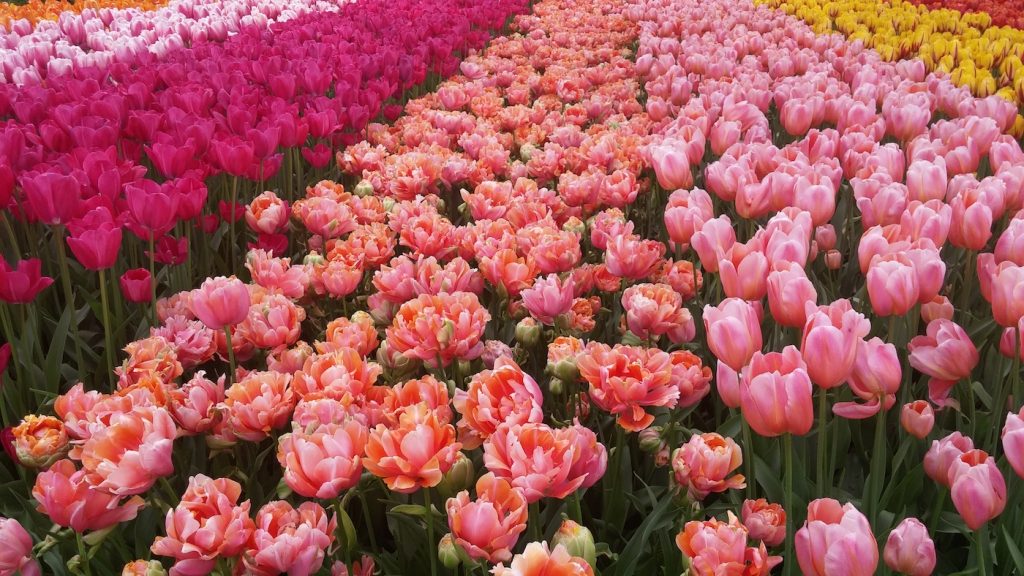
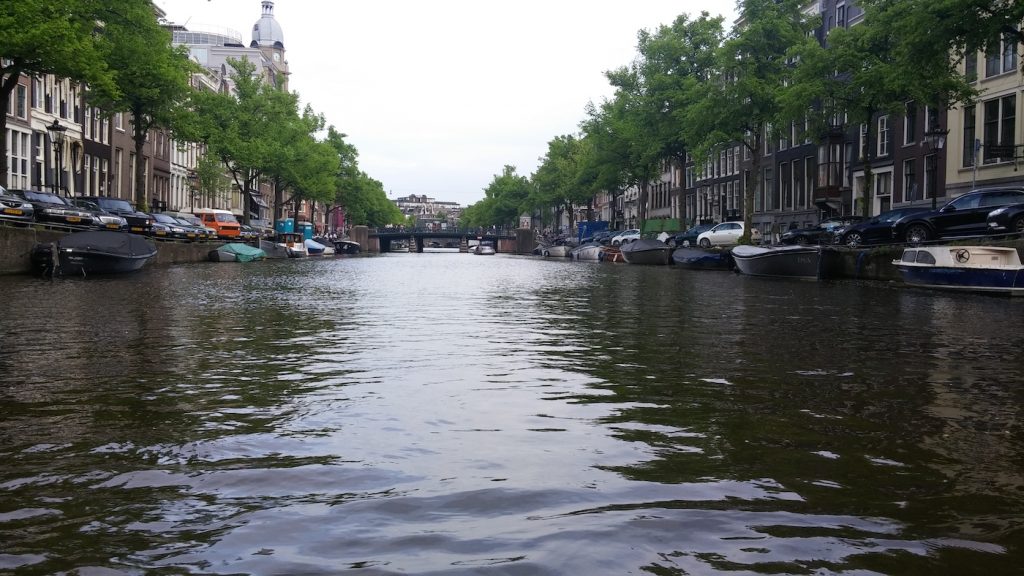
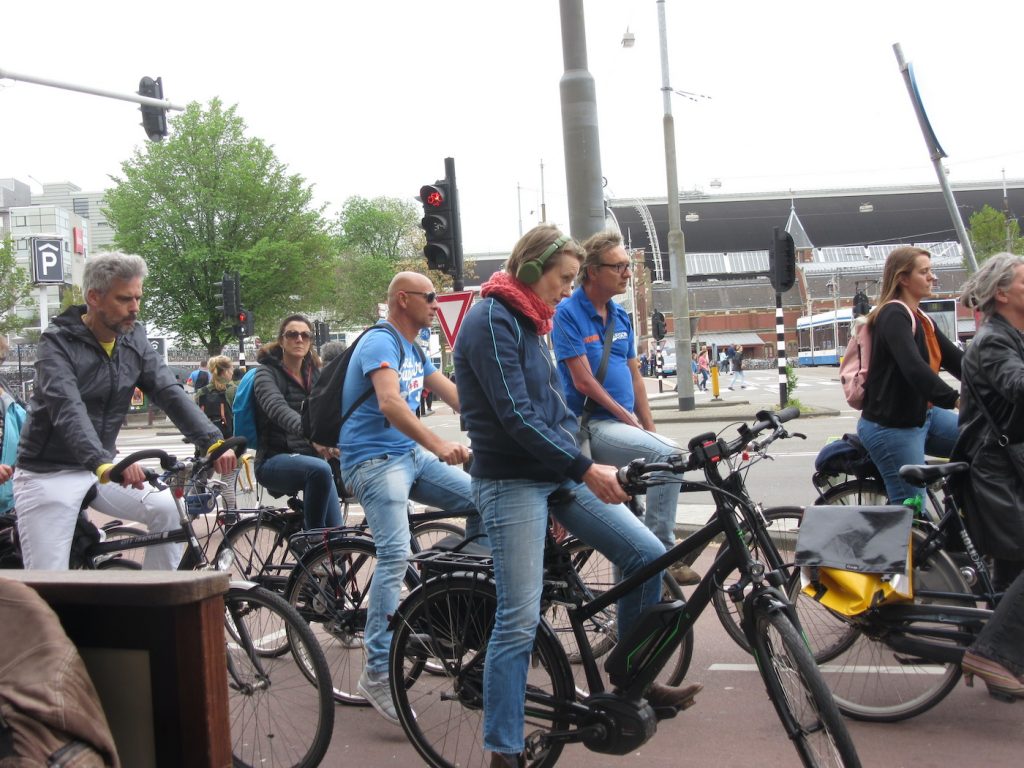
One must see windmills when in the Netherlands, and Zaanse Schans – also close to Amsterdam – is the place to see them. The original wind turbines of the 15th century are still preserved here and are part of the Dutch cultural history. They are restored and maintained with pride and great effort as many wind mills tower eight to 10 stories high. Built with wooden inter-locking gears and levers ingeniously designed, they are fascinating to watch. Huge mills such as these would power real houses, capturing winds from the North Atlantic and transforming it into energy to grind grain, pump water, or saw logs into planks for homes and ships.
Holland and Amsterdam in particular have a reputation of being tolerant and socially liberal. Prostitution is legal and regulated, hashish and marijuana have been legal for more than 50 years, and refugees from religious persecution have flocked here over the centuries.
Today, women and men, young and old, flock to see the notorious Red Light District of Amsterdam by night, and yes we did. Well-shaped, scantily clad women of all types gaze out from behind glass doors, the rooms illuminated by rose-colored light, waiting for someone to show interest so they can open the door, negotiate, hold a hand and then close the curtain. Their idealized presentation is enhanced by a pout, moistening of lips, or a beckoning finger. It is a free show like no other in Europe, and passing men and women alike smile laugh and joke among themselves as they pass quickly by on the cobblestone alleys. With Sue by my side, it was a fascinating stroll.
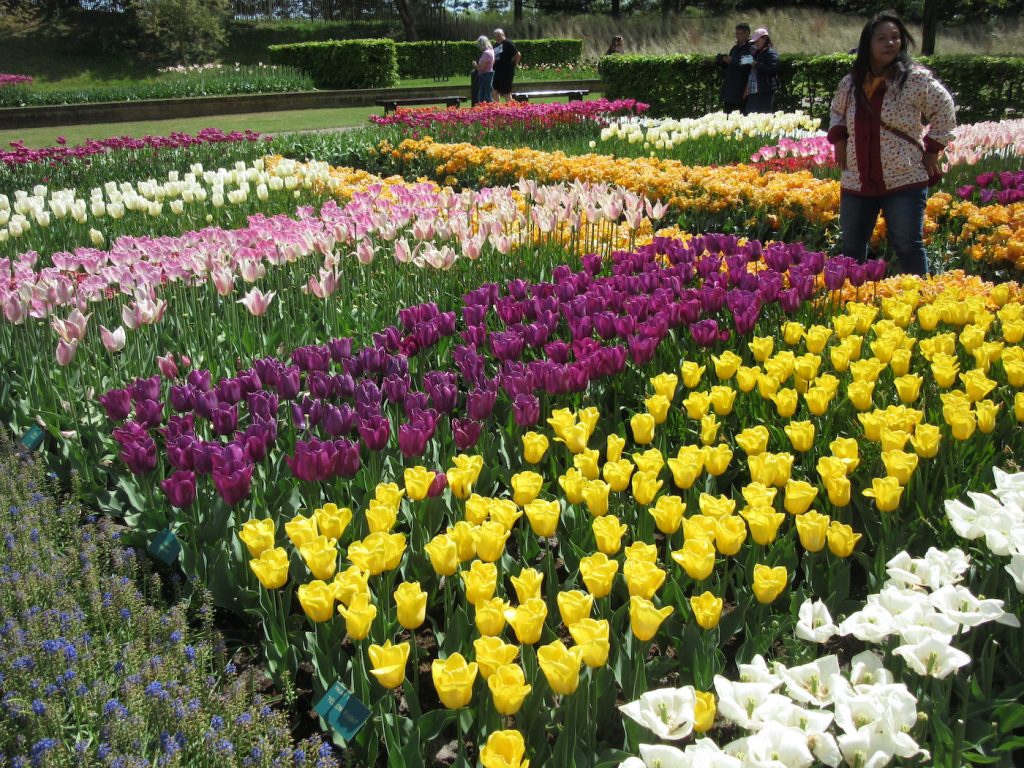
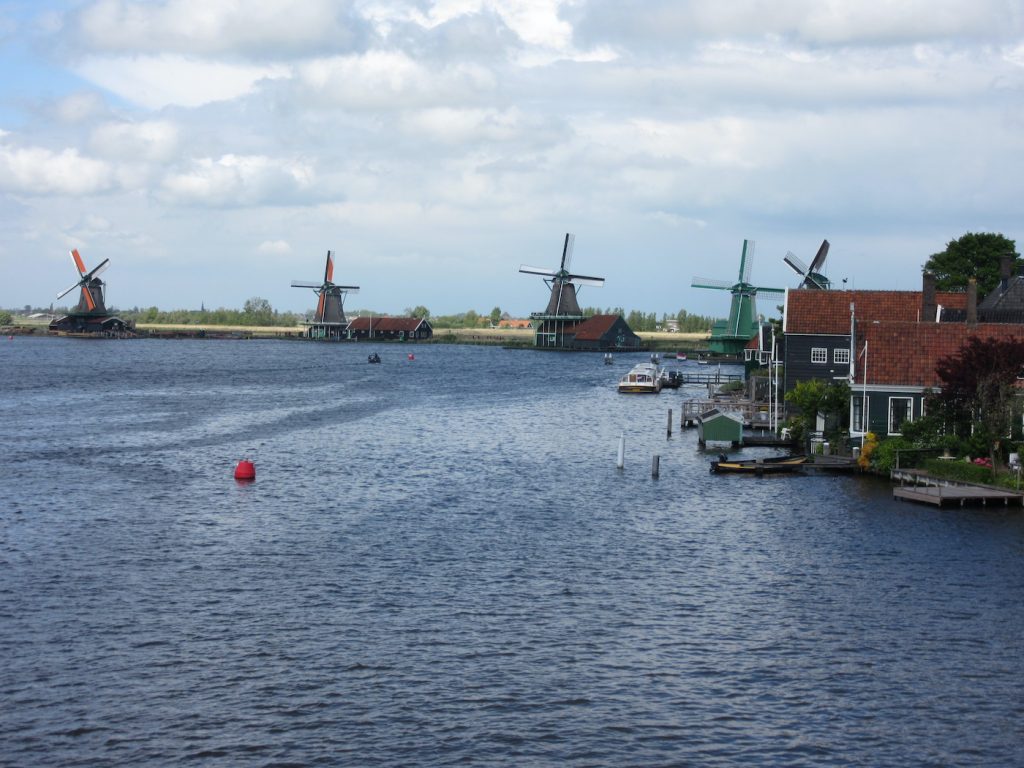
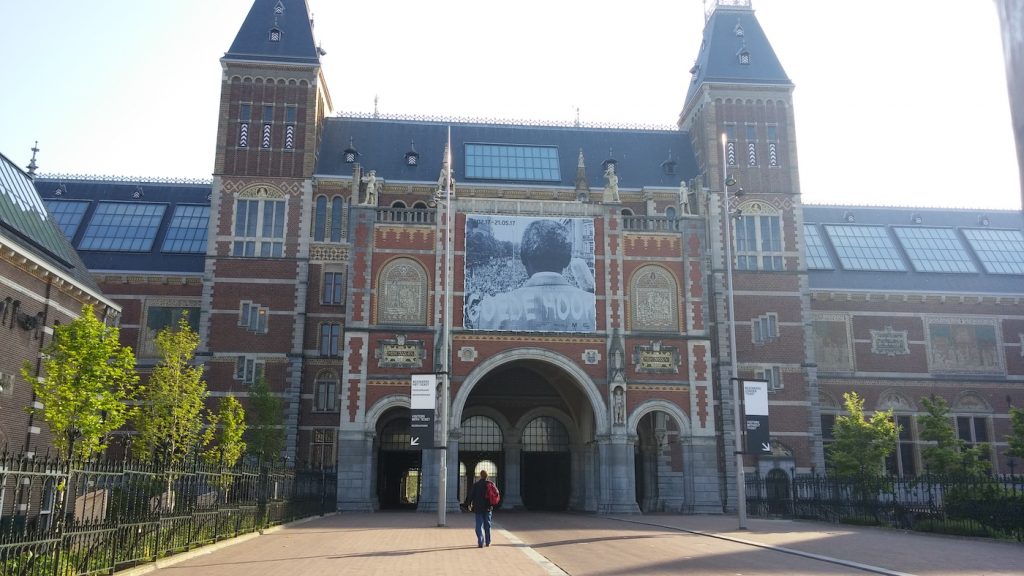
Besides walking, bicycling is the chief mode of transportation in Amsterdam, traveling upon well-marked pathways that seem to go everywhere. But nevertheless, the confusion of the city and the many bikes darting beside the narrow streets driven by the many mandatory compact cars or mopeds can be challenging. I suggest taking a ride outside the downtown area that rapidly gives way to pastoral scenes contrasting sharply with the bustle of the city.
Another way to avoid crowded streets is to take a canal tour ride along some of the seemingly countless water channels. Being chauffeured in a long, low boat that passes under arched bridges is relaxing as you gaze upon homes and establishments a century old, but it also brings one in close contact with the land and water management system so necessary in Holland. The network of canals and bridges makes this town the Venice of northern Europe.
The Rijks Museum of art is world-class and one could easily spend a week but not see it all. Of more manageable size is the Van Gogh Museum, which showcases the evolution of this “student-of-art” who became an innovator of his day, shattering regimented styles with his unusual use of colors and brushstrokes. Over time, this troubled Dutch genius was recognized and came to be celebrated worldwide.
As our ship pulled into the channel that would take us south to the Rhine and Germany, for a 15-day European tour by water, we were excited anticipating new lands and sights. If you are interested in hearing more, let me know: John@jsburk.com






